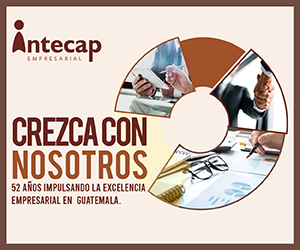Before the clinic ran out of oxygen, Maria Auxiliadora da Cruz had been showing encouraging signs of progress against Covid-19. On 14 January, her oxygen levels had been above the normal level of 95% but, within hours of being deprived of that vital resource, her stats plummeted to 35%.
At this point, patients would normally be given intubation and oxygen by machine. Instead, the 67-year-old retired nurse died. “It was horrible,” her grieving daughter-in-law Thalita Rocha told the BBC. “It was a catastrophe. Many elderly patients began to deteriorate and turn blue.”
In an emotional video that went viral on social media, she described what was happening at Policlínica Redenção in the northern Brazilian city of Manaus. “We’re in a desperate situation. An entire emergency unit has simply run out of oxygen… A lot of people are dying.”
Brazil has the world’s second-highest COVID-19 death toll with more than 221,000 fatalities. In Manaus, the health system has collapsed twice during the pandemic and deaths doubled between December and January.
Now there are fears the lack of oxygen supplies seen there could unfold elsewhere in Brazil and even in other parts of Latin America, where a second wave of Covid-19, in many countries, is proving to be worse than the first one.
In Peru, some hospitals have been unable to meet the demand brought by a steep rise in cases in recent weeks. As a result, patients’ relatives have had to hunt for oxygen in the black market. In some cases, they come back with nothing.
A black market is also thriving in Mexico, where more than 155,000 have died in the pandemic. To make things worse, there have been reports of thieves taking oxygen cylinders from hospitals and clinics.
According to the World Health Organization (WHO) one in five Covid-19 patients will require oxygen. In severe cases, this rises to three in five. The organization says some hospitals have seen demand for oxygen increase between five and seven times above normal levels because of the influx of patients with severe and critical disease.
The most dramatic situation in the world is in Brazil, where nearly 340,000 oxygen cylinders are needed every day, according to the Covid-19 Oxygen Needs tracker. The online tool helps estimate the scale of the challenge for policymakers and was developed by the Covid-19 Respiratory Care Response Coordination partnership which includes Path and Every Breath Counts.
Also, according to the tracker, Mexico and Colombia each need more than 100,000 cylinders daily.
So how does a hospital run out of oxygen?
Oxygen has been considered an essential medicine by the WHO since 2017, but Lisa Smith, from Path’s market dynamics program, says ensuring adequate supply depends on many “components” falling into place.
This includes not only sources of production, but also training to enable medical staff to monitor and manage oxygen levels.
Medical oxygen is produced in large quantities at plants and delivered to hospitals in two ways: either in bulk in liquid tanks or as pressurized gas in cylinders containing smaller volumes.
Liquid oxygen is the cheapest and best technology available but it requires hospitals to have the right infrastructure to pipe oxygen to the patient’s bedside. This is common in developed countries such as the US and those in Europe.
Cylinders do not require pipes and can be delivered to clinics without a sophisticated infrastructure. However, their distribution on a smaller scale means they are less cost-effective, in addition to being cumbersome to transport and handle, which also carries an increased risk of cross-contamination.
Another source of production is on-site oxygen plants, which produce oxygen to be piped or compressed into cylinders. The WHO says it is currently trying to map how many such plants exist in the countries.
After Manaus reached crisis point, oxygen donations were sent from the federal government and other states – as the local providers said they were unable to increase production – and across the border from Venezuela. But even transporting them became a problem.
Jesem Orellana, an epidemiologist at the Oswaldo Cruz Foundation in the Brazilian city of Rio de Janeiro, said the risk of shortage continued and was exacerbated by global demand.
According to Path, medical oxygen accounts for just 5-10% of the world’s oxygen production. The rest is used in various industries, such as mining, chemical and pharmaceutical.
“We need to think about oxygen as much as we think about electricity, water or other essential utilities,” says Ms Smith. “This can’t be something that we’re only concerned about when it’s bad, because when it’s bad, people will die.”
In the meantime, there are concerns that the strain of Covid-19 on oxygen supplies could have a knock-on effect for the treatment of other diseases.
“Covid has shown us just how essential it is in countries where there is no vaccine against Covid, no medicines,” says Leith Greenslade, who leads Every Breath Counts Coalition. “Often, it’s down to whether you get oxygen or not, whether you live or die.” (https://www.bbc.com/news/world-latin-america-55829424)






































